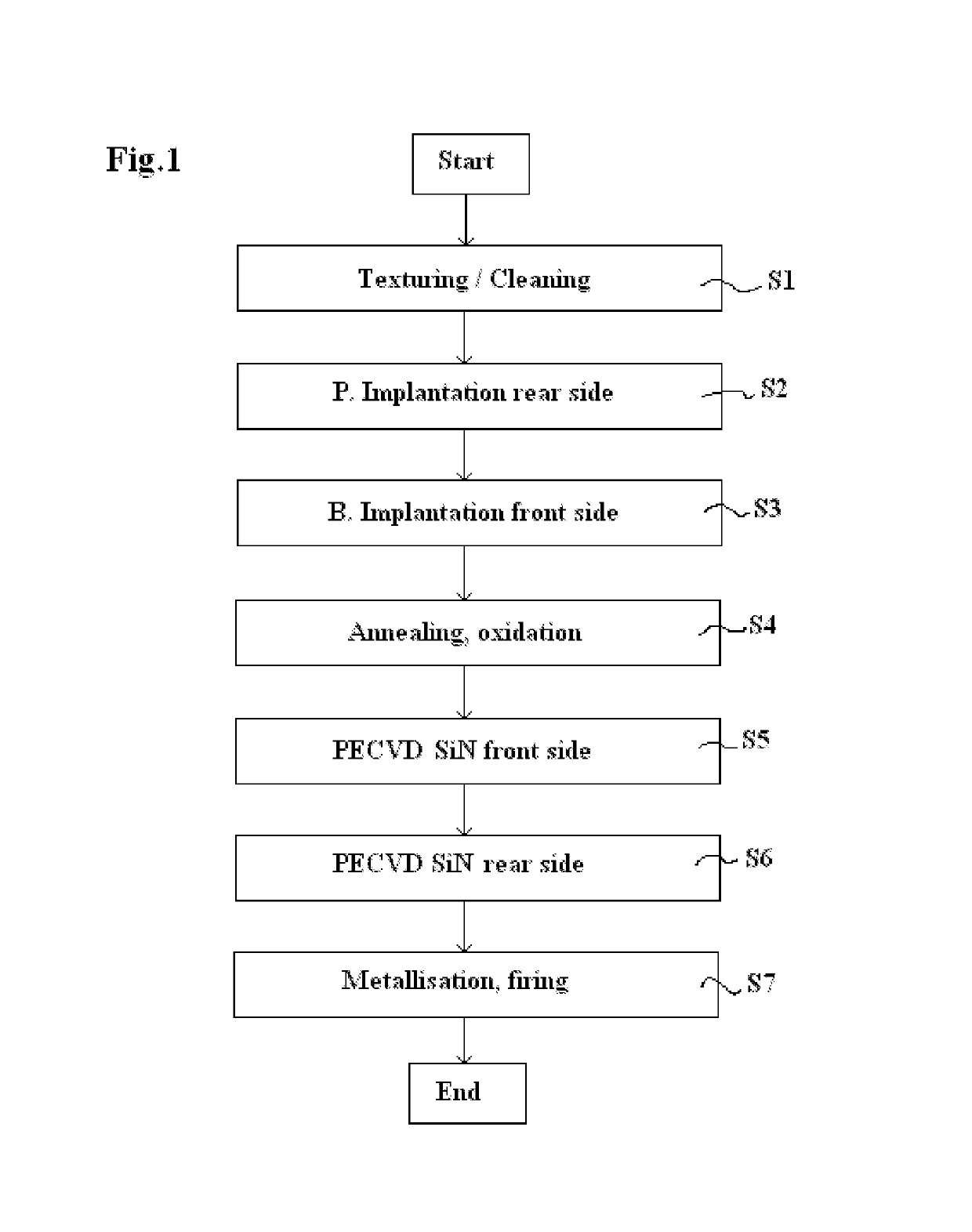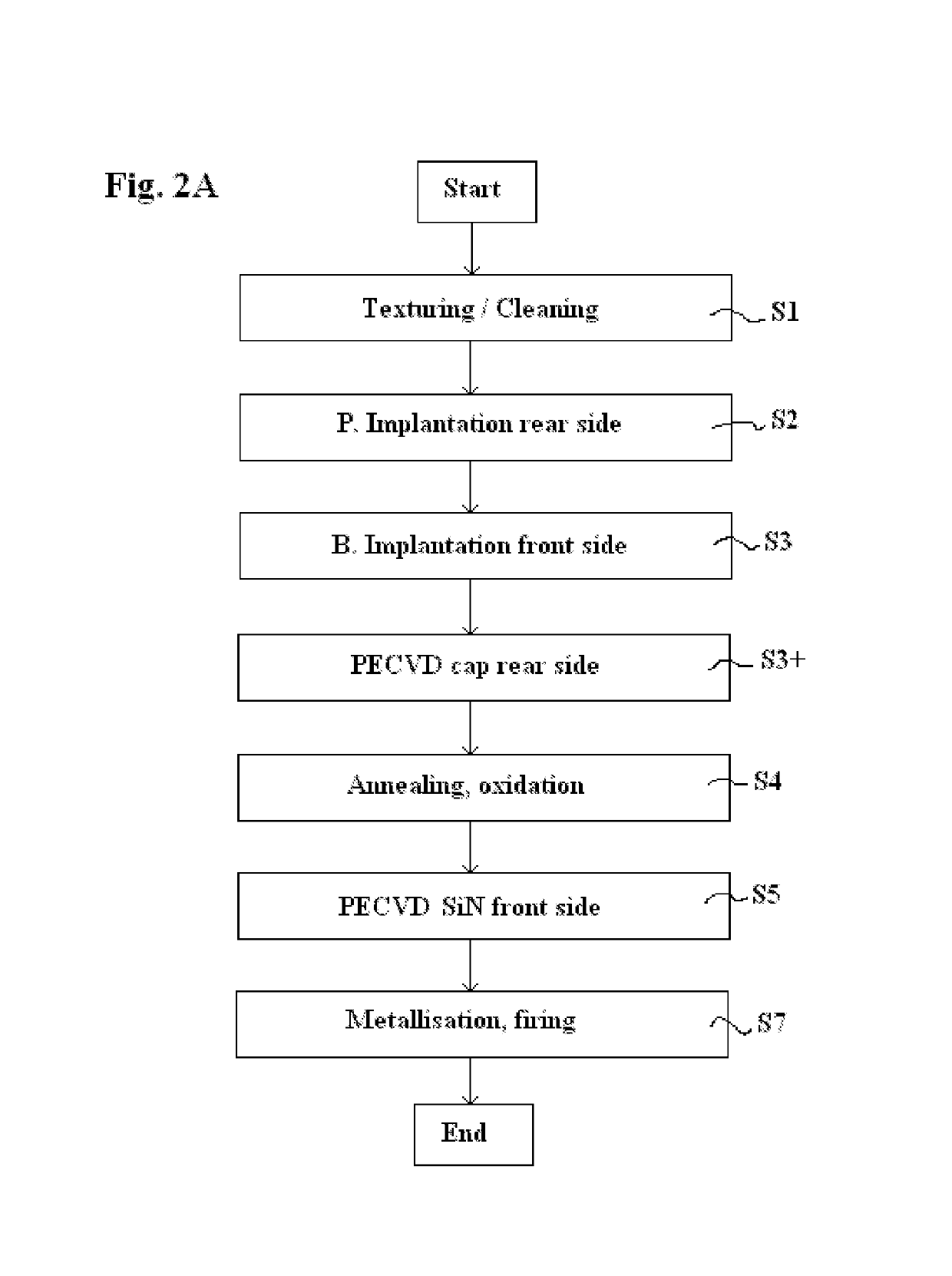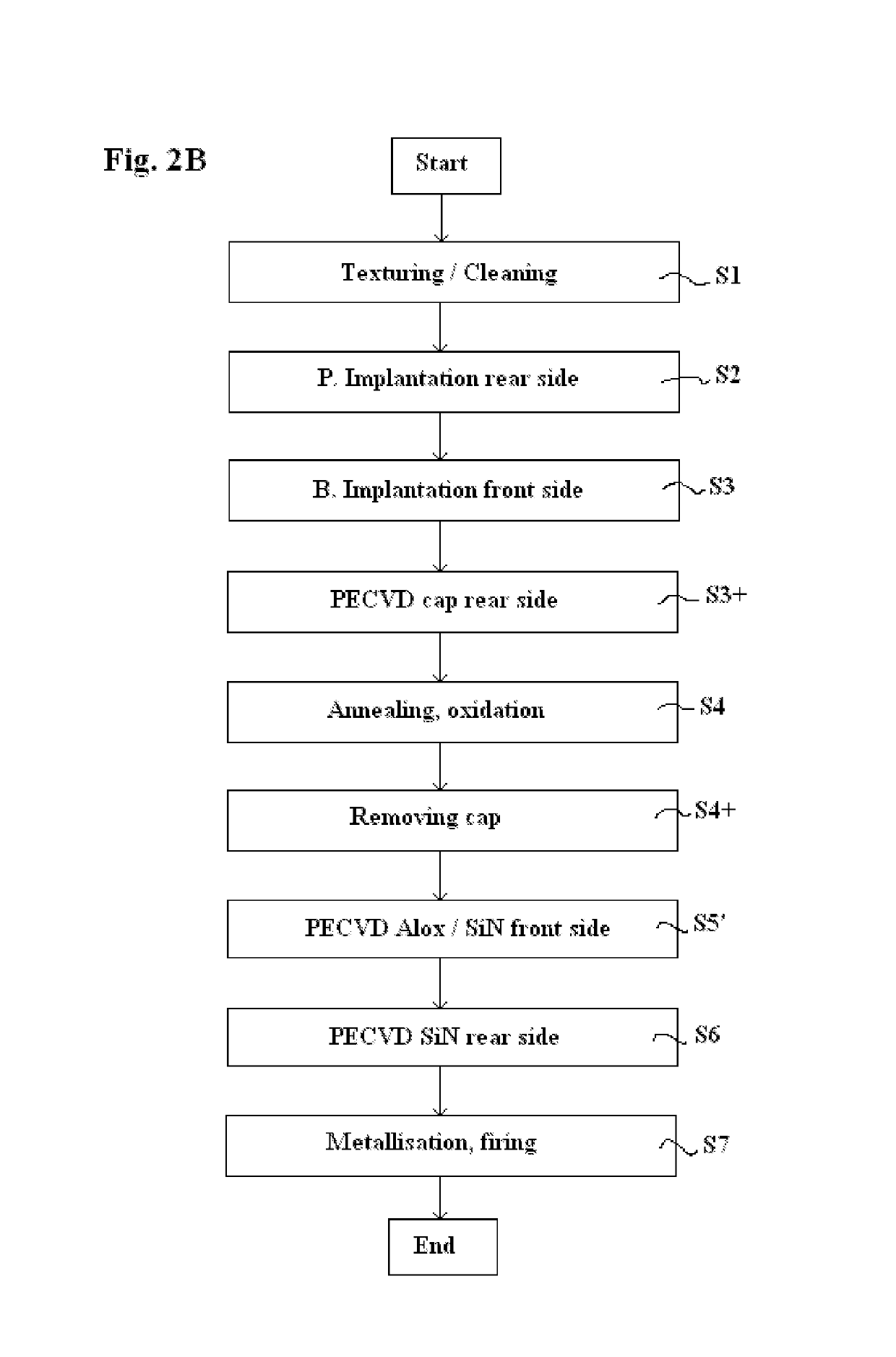Method for producing a solar cell involving doping by ion implantation and depositing an outdiffusion barrier
a solar cell and ion implantation technology, applied in photovoltaic energy generation, electrical equipment, renewable energy products, etc., can solve the problems of reducing the quantum efficiency of the cell, the curing conditions are not ideal for the back surface of the phosphorus, and the practicability of the application, so as to prevent the outdiffusion of phosphorus, slow down the diffusion of phosphorus, and prevent autodoping
- Summary
- Abstract
- Description
- Claims
- Application Information
AI Technical Summary
Benefits of technology
Problems solved by technology
Method used
Image
Examples
Embodiment Construction
[0022]FIG. 2A shows diagrammatically in a flow chart important steps of the production of a crystalline solar cell in one embodiment of the method according to the invention, whereas the representation is again rather self-explanatory. With respect to the previous process flow shown in FIG. 1, a cap is provided on the rear side of the substrate by means of PECVD (step S3+) after the steps of phosphorus implantation into the rear side of the substrate and of boron implantation into the front side of the substrate (S3), followed in standard sequence by an annealing (step S4) connected to the oxidation of the substrate surface. The cap produced in step S3+ remains as an anti-reflection / passivation layer on the substrate so that the step S6 of the standard process sequence is here dispensed with.
[0023]In contrast thereto the sequence sketched in FIG. 2B sets forth the generation of a cap on the rear side of the substrate in step S3+ which will be removed again after the annealing step S...
PUM
 Login to View More
Login to View More Abstract
Description
Claims
Application Information
 Login to View More
Login to View More - R&D
- Intellectual Property
- Life Sciences
- Materials
- Tech Scout
- Unparalleled Data Quality
- Higher Quality Content
- 60% Fewer Hallucinations
Browse by: Latest US Patents, China's latest patents, Technical Efficacy Thesaurus, Application Domain, Technology Topic, Popular Technical Reports.
© 2025 PatSnap. All rights reserved.Legal|Privacy policy|Modern Slavery Act Transparency Statement|Sitemap|About US| Contact US: help@patsnap.com



